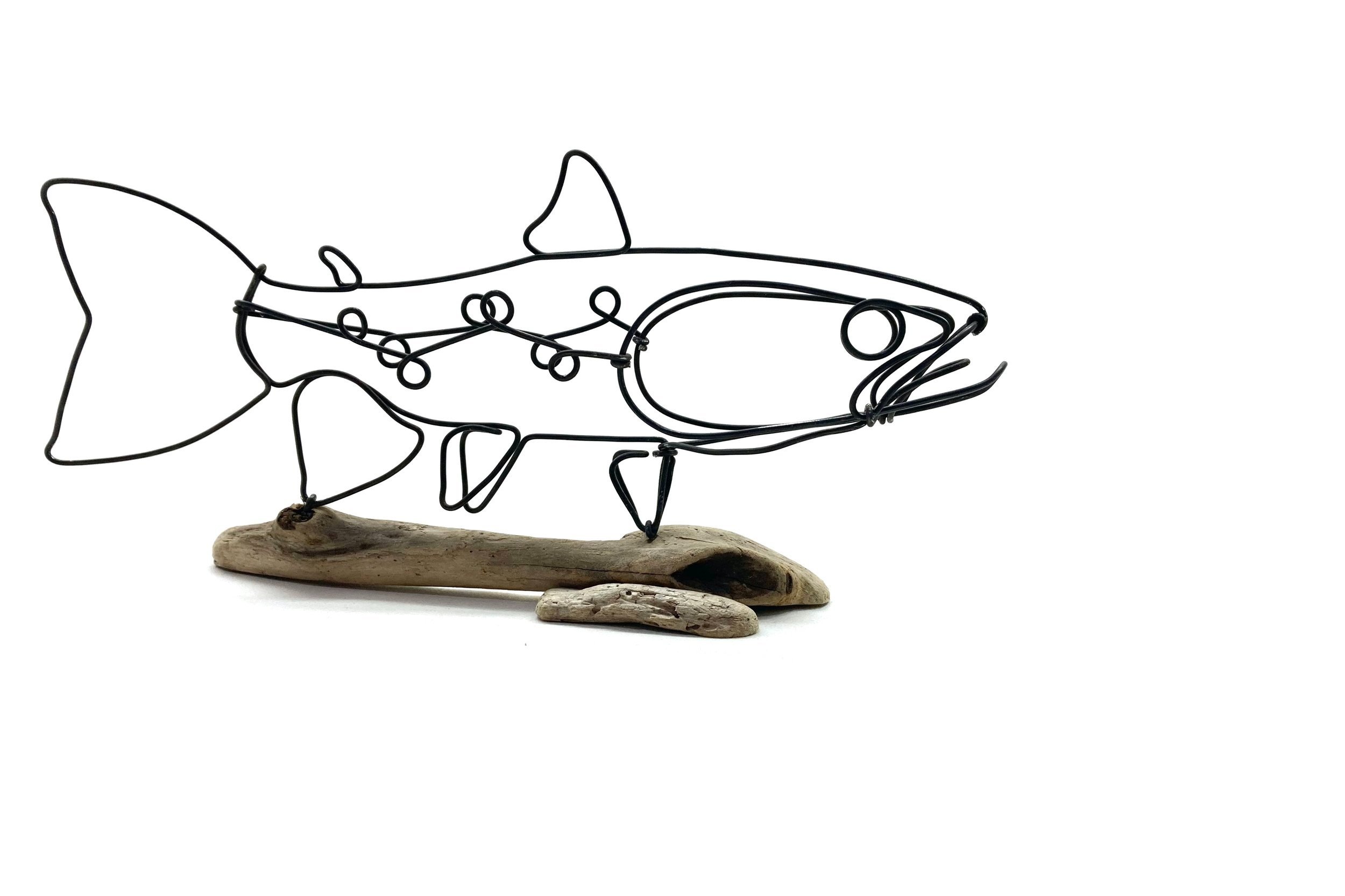Bud Bullivant
About the Artist
Bass Wire Sculpture in Progress
Local Artist to Minnesota
“Traditional Craft with a Modern Wire Twist”
Biography
As an art teacher, I taught a lesson on wire sculpture for many years. Students often commented that my examples were really cool and suggested that I should sell them. After 20 or more years of hearing that suggestion I happened upon a roll of baling wire at an auction, which became the launch of a journey to explore space and 3D design in my own way.
My love of the natural world and the many unique and wonderful creatures within became the enduring theme of my work in wire. Each sculpture is a unique, handmade, three dimensional representation of my friends from the natural world and an abstraction and a simplification just realistic enough to fill in with our own memories from lived experiences.
Artist Statement
“I come from a long line of storytellers. I’ve spent many hours listening to richly detailed stories, often retold with ornamental embellishment. Those who know me well have come to expect stories from me; some old, some true, some only somewhat true and are shared for the sheer joy of the telling. My artwork is my way of effectively combining three of my greatest passions: nature, story telling and art.” —Bud
The Process
Using a pliers and 16 or 14 gauge steel wire I create one-of-a-kind wire sculptures, typically with a single strand. Each sculpture is a three-dimensional drawing inspired by nature. I work in a minimal style, eliminating all but the most essential aspects of the piece, an abstraction and a simplification just realistic enough to fill in with our own memories from lived experiences. I mount most pieces on an interesting piece of driftwood gleaned from the shores of Lake Superior.
The History of Wire
Wire has been used as an art material for thousands of years and can be traced as far back to the Ancient Egyptians who used thin wire of precious metals to craft intricate inlays for their jewelry.
More recently, at about 400 years ago, wirework developed into a trade among the Tinkers of northern Slovakia. These tinkers traveled between villages crafting utilitarian household objects from wire -such as baskets, birdcages, utensils, and tools. The objects they created were in such high demand that tinkers were allowed special status to move between borders without papers. They were able to attain a degree of social status for the creation of a type of mousetrap - a necessary innovation of the time. At the onset of the Industrial Revolution however, with the mass production of wire products, the craft retreated into obsolescence where artisans evolved the medium into rich folk art of their region.
Today wire continues to be widely used as an artistic material. Artists such as Alexander Calder, Ruth Asawa, Gavin Worth, Seung Mo Park, to name a few of the many visionaries who have expanded the possibilities that lie within the medium of wire. As each artist employs wire as their medium, their work and styles are as unique as fingerprints.




